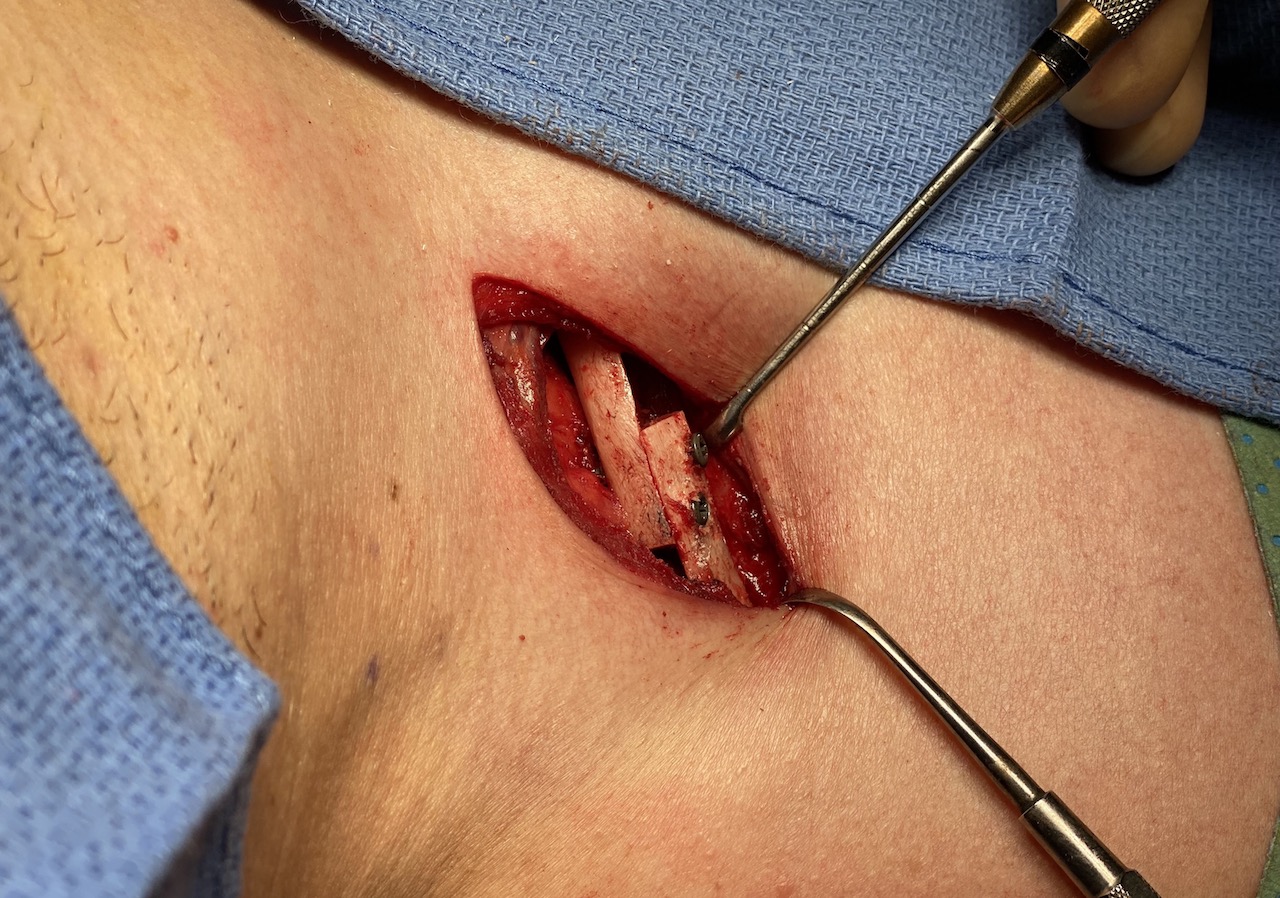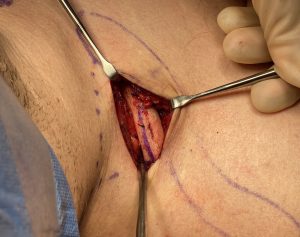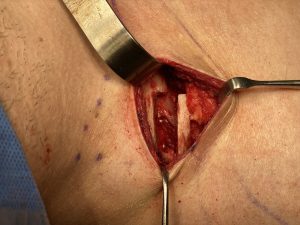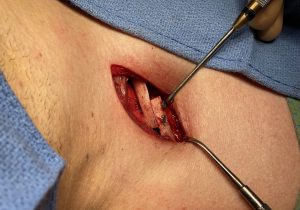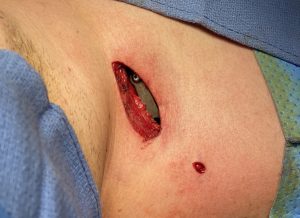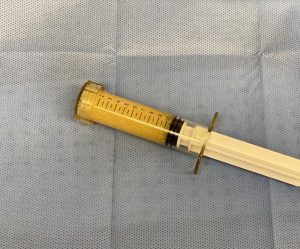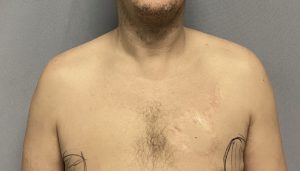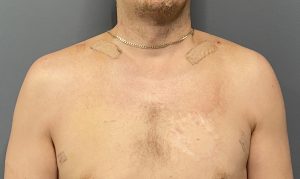Background: Clavicle lengthening is one type of shoulder reshaping surgery with the intent of creating a more masculine upper torso appearance. While increased shoulder width is one of the desired effects, changing a rounded shape to a more square or angular shoulder appearance is equally important. Small clavicle lengths create rounder shoulders with a more obtuse angle while a longer clavicle length creates a shoulder with a less obtuse angle that appears less round.
There are two basic methods to lengthen the clavicle, an interpositional bone graft and an osteotomy technique. Each has their advantages and disadvantages. An interpositional bone graft provides a strong wedge between two blunt cut clavicle bone ends and has the ability to maximally length the bone to 2.5cms per side as a result. Its disadvantage is that it requires a fibular bone graft harvest and will take longer to form a solid bony consolidation. Conversely the osteotomy technique does not require a bone graft and has the potential to heal more rapidly. dependent on the type of osteotomy technique used. But it creates less lengthening as the push to separate the two cut ends of the bone is less.
The osteotomy technique for clavicle lengthening is far from an established technique. But borrowing from the sagittal split osteotomy technique for the mandible, known as the SSRO, the concept of maintaining normal bone thickness/contour in the central aspect of where the bone is lengthened makes good biologic sense. This allows for more rapid healing, and combined with plate and screw fixation, should allow adequate bone healing to have occurred in 6 weeks after the surgery.
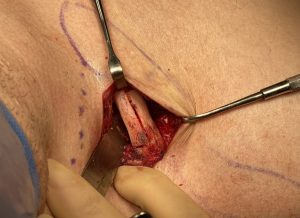
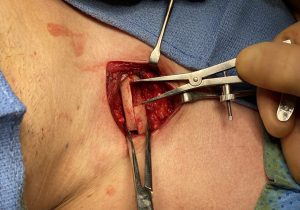

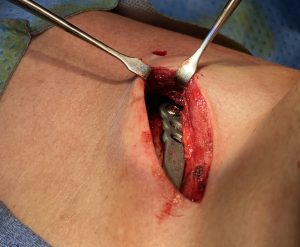
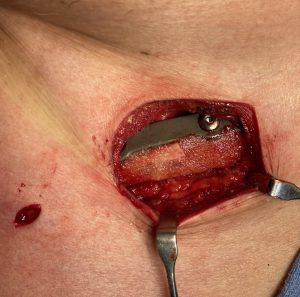
Before and immediate clavicle lengthening changes.
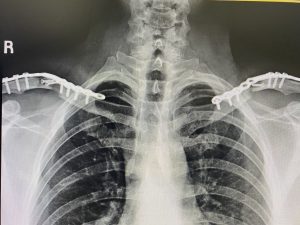
While the bone split technique is very different from the two blunt cut ends that come together in clavicle reduction, the really significant clinical difference is in how much harder it is to expand the bone than it is to collapse it inward in reductions. The bony humerus and scapula with their soft tissue attachments provide substantial restrictions in pushing the freed clavicle segment outward. Despite every intraoperative maneuver it is difficult to get any patient past 20mms of lengthening. For this reason I would advise all clavicle lengthening patients to undertake shoulder stretching/expansion therapy prior to surgery to help overcome some of these anatomic restrictions.
Case Highlights:
1) Clavicle lengthening is one type of masculine shoulder augmentation.
2) The sagittal split osteotomy technique offers a method of maintaining maximal bone contact and thickness as the clavicle is lengthened.
3) Allogeneic bone putty fills in the split thickness bone defects to expedite healing and restore normal bone thickness.
4) The amount of clavicle lengthening possible is influenced by the limitation of the shoulder soft tissues which can be aided by a preoperative stretching regimen.
Dr. Barry Eppley
Indianapolis, Indiana

